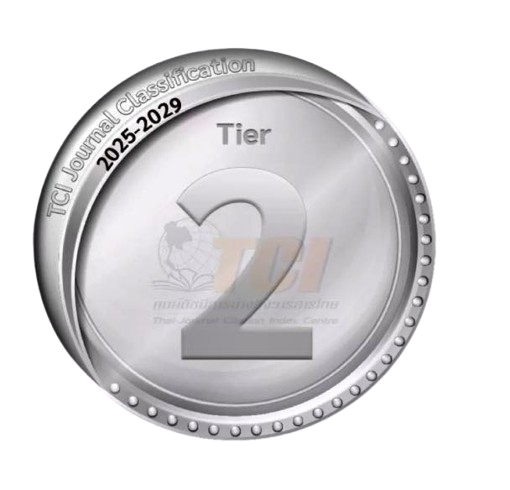The effects of meditation SKT1,8 on postoperative pain after abdominal hysterectomy or ovarion surgery at Gynecological unit of Phrae hospital
Keywords:
Pain level after hysterectomy/ovarian surgery, SKT Meditation Therapy 1, SKT Meditation Therapy 8Abstract
Background: Hysterectomy/Ovarian surgery is the most common procedure in the gynecological ward of Phrae Hospital. Pain is classified as suffering that causes the patient to less body movement and slow recovery after surgery. And found that the first 24 hours after surgery the patient has a high level of pain, more than 70 percent. Pain can be managed by planning to manage the drug and non-drug combination. Meditation therapy is a way to reduce attention to pain, create calm and relax. Which is caused by the secretion of a neurotransmitter called endorphins in the brain to reduce the pain.
Objective: this study was to compare pain levels during the first 24 hours postoperative in hysterectomy/ovarian surgery patients between the SKT 1,8 concentration therapy group and the SKT 1, 8 non-meditation group.
Study design: This research was a quasi-experimental research with a pre- and post-experimental control group. The sample group is 72 patients admitted after hysterectomy/ovarian surgery in the gynecological ward of Phrae Hospital between September 2022 until February 2023. The attended group participants were divided into 36 experimental groups and 36 controls. The research tools consisted of an educational program and SKT 1, 8 therapy meditation training program, a numerical pain assessment scale. The data were analyzed by frequency, percentage, mean, standard deviation. and the t-test statistics.
Results: Patients who took SKT 1, 8 meditation therapy group had a decrease pain level after discharge from the operating room (p<.001), 18 hours after discharge from the operating room (p=.008), and 24 hours after discharge from the operating room (p=.014). The non-differentiation was 6 hours after discharge from the operating room (p=0.115) and 12 hours after discharge from the operating room (p=.896).
Conclusions: Healing meditation SKT 1, 8 resulting in pain relief for patients after surgery It can be used as alternative to pain management together with treatment according to modern medicine.
Keywords: Pain level after hysterectomy/ovarian surgery, SKT Meditation Therapy 1, SKT Meditation Therapy 8
References
พงษ์ศักดิ์ ชัยศิลป์วัฒนา. การแพทย์ทางเลือก ผ่าตัดทางนรีเวชผ่านกล้อง. กรุงเทพฯ: ภาควิชาสูติศาสตร์-นารีเวชวิทยา คณะแพทยศาสตร์ศิริราชพยาบาล; 2553 [เข้าถึงเมื่อ 12 มกราคม 2565]. เข้าถึงได้จาก: https://www.si. mahidol. ac.th/th/healthdetail.asp?aid=533
Padma PS, Roach EJ, Lobo DJ. Effectiveness of preperative instructions. Manipal Journal of Nursing and Health Sciences 2017;3(1):3-9.
เกศริน อินธิยศ, วัลย์ลดา ฉันท์เรืองวณิชย์, เกศศิริ วงษ์คงคำ, ชนา โอฬารรัตนพันธ์. ผลของโปรแกรมการจัดการความปวดด้วยการประคบเย็นร่วมกับการใช้ผ้ารัดหน้าท้องต่อระดับความปวดและการเคลื่อนไหวร่างกายหลังผ่าตัดในผู้ป่วยนรีเวชที่ได้รับการผ่าตัดแบบเปิดหน้าท้อง. วารสารสภาการพยาบาล 2564;36(3):83-102.
Good M, Stanton-Hicks M, Grass JA, Anderson GC, Makii M, Geras J. Pain after gynecologic surgery. Pain Manage- ment Nursing 2000;1(3):96-104.
จำเนียร คงประพันธ์. ผลของโปรแกรมส่งเสริมการดูแลตนเองอย่างมีแบบแผนหลังผ่าตัดในผู้ป่วยนรีเวชกรรมต่อการฟื้นสภาพของผู้ป่วยหลังผ่าตัดทางหน้าท้อง. วารสารโรงพยาบาลแพร่ 2562;27(1):6-7.
ศศินาภรณ์ โลหิตไทย, บุญยิ่ง ทองคุปต์. ผลของรูปแบบผ้ารัดหน้าท้องประคบเย็นต่อความปวดแผลผ่าตัดในมารดาหลังผ่าตัดคลอดทางหน้าท้อง. วารสารคณะพยาบาลศาสตร์ มหาวิทยาลัยบูรพา 2562;27(2):23-32.
Macrae WA. Chronic post-surgical pain: 10 years. British Journal of Anaesthesia 2008;101(1):77-86.
North Dakota Board of Nursing. Role of Nurse in Pain Management [Internet]. [Cited 2013 July 9] Available from: http://www.Ndbon.org/opinions/ role%20of20nurse%20in20%20 mgmt.asp
อนงค์ สุทธิพงษ์, อัจฉรา อ่วมเครือ, เกษร วงศ์วัฒนากิจ, ปาริฉัตร อารยะจารุ. การพัฒนาระบบการจัดการความปวดที่มีความเฉพาะต่อผู้ป่วยโรงพยาบาลราชบุรี. วารสารสมาคมพยาบาลฯ สาขาภาคตะวันออกเฉียงเหนือ 2556;31(4):181-8.
อารี นุ้ยบ้านด่าน, ทิพมาศ ชิณวงศ์. สมาธิกับการรับรู้ความปวด. วารสารพยาบาลสงขลานครินทร์ 2556;33(1):69-74.
กระทรวงวิทยาศาสตร์และเทคโนโลยี. สมาธิช่วยลดความเจ็บปวด [อินเตอร์เน็ต]. 2555 [เข้าถึงเมื่อ 12 มกราคม 2565]. เข้าถึงได้จาก: http://oldweb. most.go. th/main/index.php/media-library/ surfing-the-science/2632-meditators-can-concentrate-the-hurtaway.html
สมพร กนทรดุษฎี เตรียมชัยศรี. การปฏิบัติสมาธิเพื่อการเยียวยาสุขภาพ. พิมพ์ครั้งที่ 4. กรุงเทพฯ: สามเจริญพาณิชย์, 2550.
สมพร กันทรดุษฎี เตรียมชัยศรี. การปฏิบัติสมาธิเพื่อการเยียวยาสุขภาพ. พิมพ์ครั้งที่15. กองการแพทย์ทางเลือก กรมการแพทย์แผนไทยและการแพทย์ทางเลือก กระทรวงสาธารณสุข. นนทบุรี: โรงพิมพ์ บริษัท วี อินดี้ ดีไซน์; 2561.
นิตยา ภูริพันธ์, ดวงกมล ดีทองคำ, ปณิตา คุณสาระ. การพัฒนาแนวปฏิบัติการพยาบาลในการจัดการอาการปวดในผู้ป่วยระยะท้ายด้วยสมาธิบำบัด SKT 8. วารสาร กองการพยาบาล 2563;47(1):173-89.
วลัยนารี พรมลา, นพมาศ ขําสมบัติ, ศิริวรรณ ตันนุกูล, ชัชวาล วงค์สารี, นฤนาท ยืนยง. การจัดการความปวดด้วยการเจริญภาวนา. วารสารวิชาการมหา วิทยาลัยปทุมธานี 2564;13(2):574-84.
จุฑารัตน์ สว่างชัย, ชุลีพร ปิยสุทธิ์, ศิริพร แก้วกุลพัฒน์. การจัดการความปวดแบบผสมผสาน: การตั้งเป้าหมายระดับความปวดหลังผ่าตัด. วารสารวิทยาลัยพยาบาลบรมราชชนนี อุตรดิตถ์ 2562;1(2):161-71.
ยศพล เหลืองโสมนภา, ศรีสุดา งามขำ. ความสนใจต่อความปวด. วารสารศูนย์การศึกษาแพทยศาสตร์คลินิก โรงพยาบาล พระปกเกล้า 2556;30(1):83-93.
สนธยา มณีรัตน์, สัมพันธ์ มณีรัตน์, พรรณภา เรืองกิจ, ณัฏฐินี ชัวชมเกตุ. คุณภาพการนอนหลับ ปัจจัยรบกวน วิธีการส่งเสริมคุณภาพการนอนหลับและความสัมพันธ์ระหว่างคุณภาพการนอนหลับและปัจจัยรบกวนของผู้สูงอายุในชุมชนแห่งหนึ่งของกรุงเทพมหานคร. วารสารจิตวิทยามหา วิทยาลัยเกษมบัณฑิต 2564;11:18-21.




